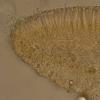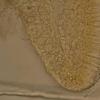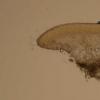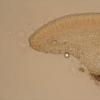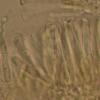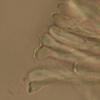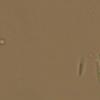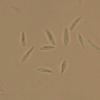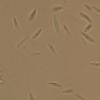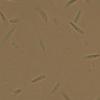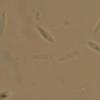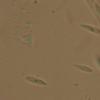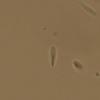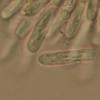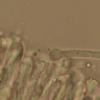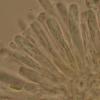
02-01-2026 17:43
MARICEL PATINOHi there, although I couldn't see the fruitbody, I

04-01-2026 17:45
 Stephen Martin Mifsud
Stephen Martin Mifsud
I was happy to find these orange asmocyetes which

03-01-2026 13:08
Niek SchrierHi all,We found groups of perithecia on a Lecanora

29-12-2025 17:44
Isabelle CharissouBonjour,J'aimerais savoir si d'autres personnes au

01-01-2026 18:35
Original loamy soil aside a artificial lake.The co

31-12-2025 19:27
Collected from loamy soil, at waterside (completel
Orbilia sarraziniana
Zuzana Sochorová (Egertová),
05-09-2021 19:06
 Hello,
Hello,do you agree here with Orbilia sarraziniana? I cannot see any problem when comparing my observations with the monograph (only smaller cells of ectal excipulum), but I am beginning with the genus, so I feel a bit unsure with my determinations.
Apothecia orange, 0.5-1 mm.
Asci 37-42 ×3.5-4.2 µm, 8-spored, upper spores having inverse orientation.
Ascospores (5.7) 6.2 - 7.8 (8.3) × (1.4) 1.45 - 1.8 (1.9) µm
Q = (3) 3.6 - 5.1 (5.9); N = 50
Me = 7 × 1.6 µm ; Qe = 4.4.
Spore bodies – one per ascospore, filiform, apically attached, (1.8) 3.6-4.8 (5.1) × 0.3-0.7 µm.
Paraphyses capitate, covered with an exudate, the last cell (18.8) 19-20.5 × (2.4) 2.94.1 (4.2) µm.
Anamorph not seen.
Central Moravia, on decaying wood at a margin of a pond (Alnus growing nearby), 4 September 2021.
Zuzana
Hans-Otto Baral,
05-09-2021 20:31

Re : Orbilia sarraziniana
Yes, absolutely typical. Spore shape (with obtuse to rounded base) and spore orientation (upper spores mostly inverted) excludes other species.
Zuzana Sochorová (Egertová),
05-09-2021 20:45

Re : Orbilia sarraziniana
Thank you very much, Zotto!



